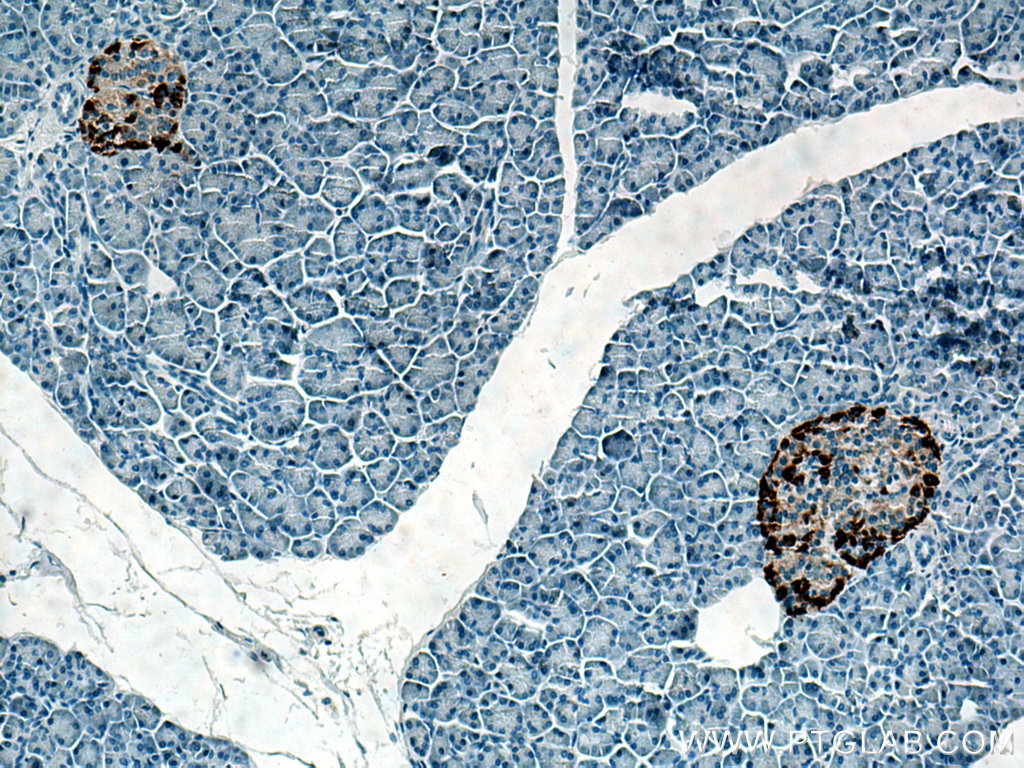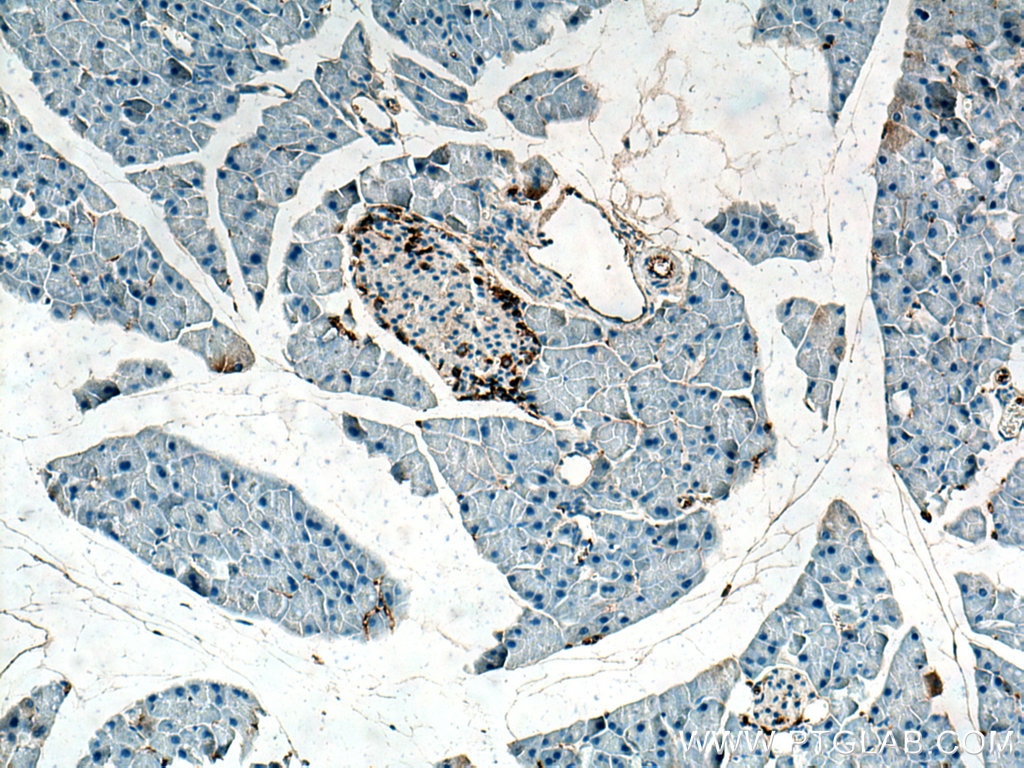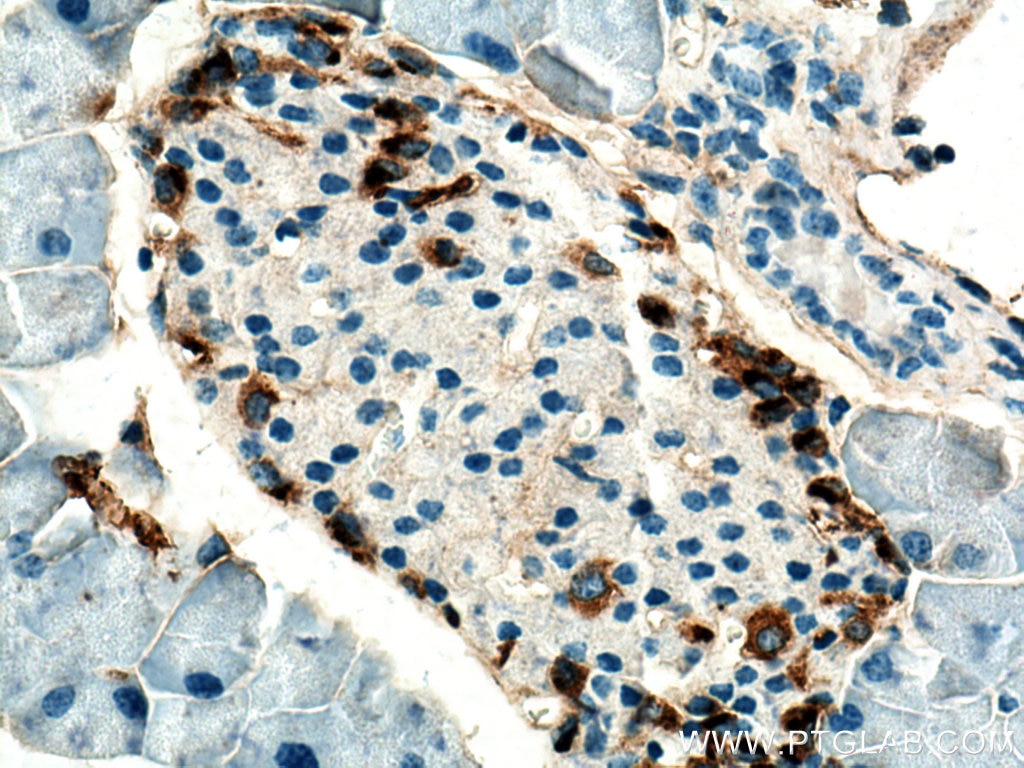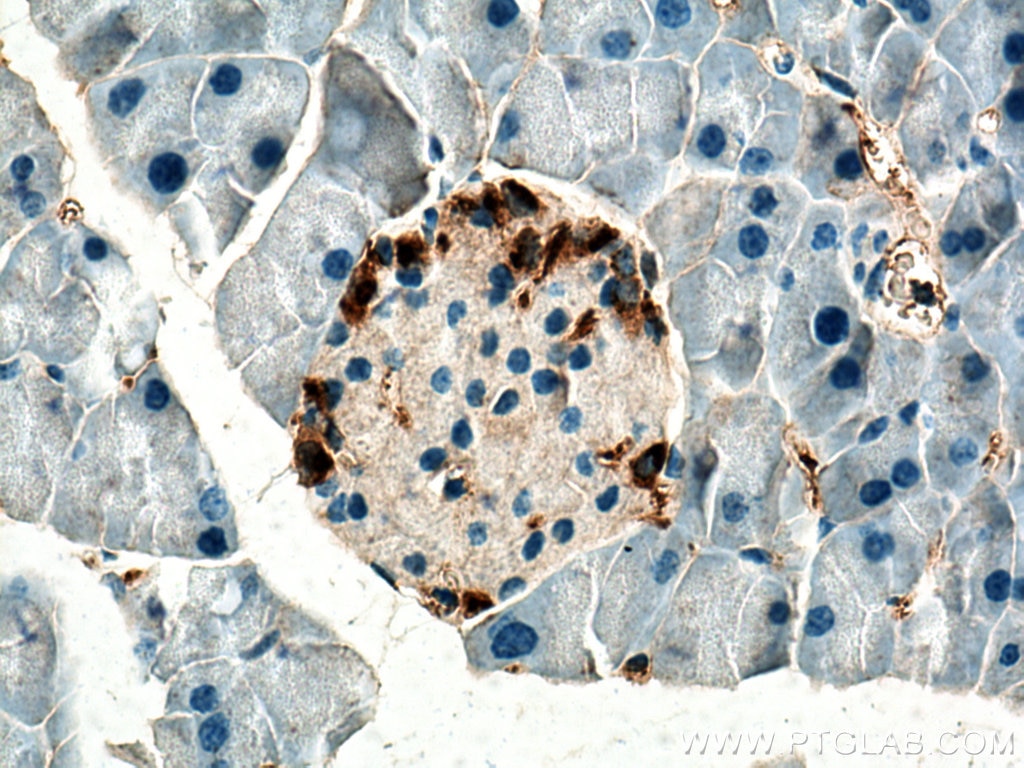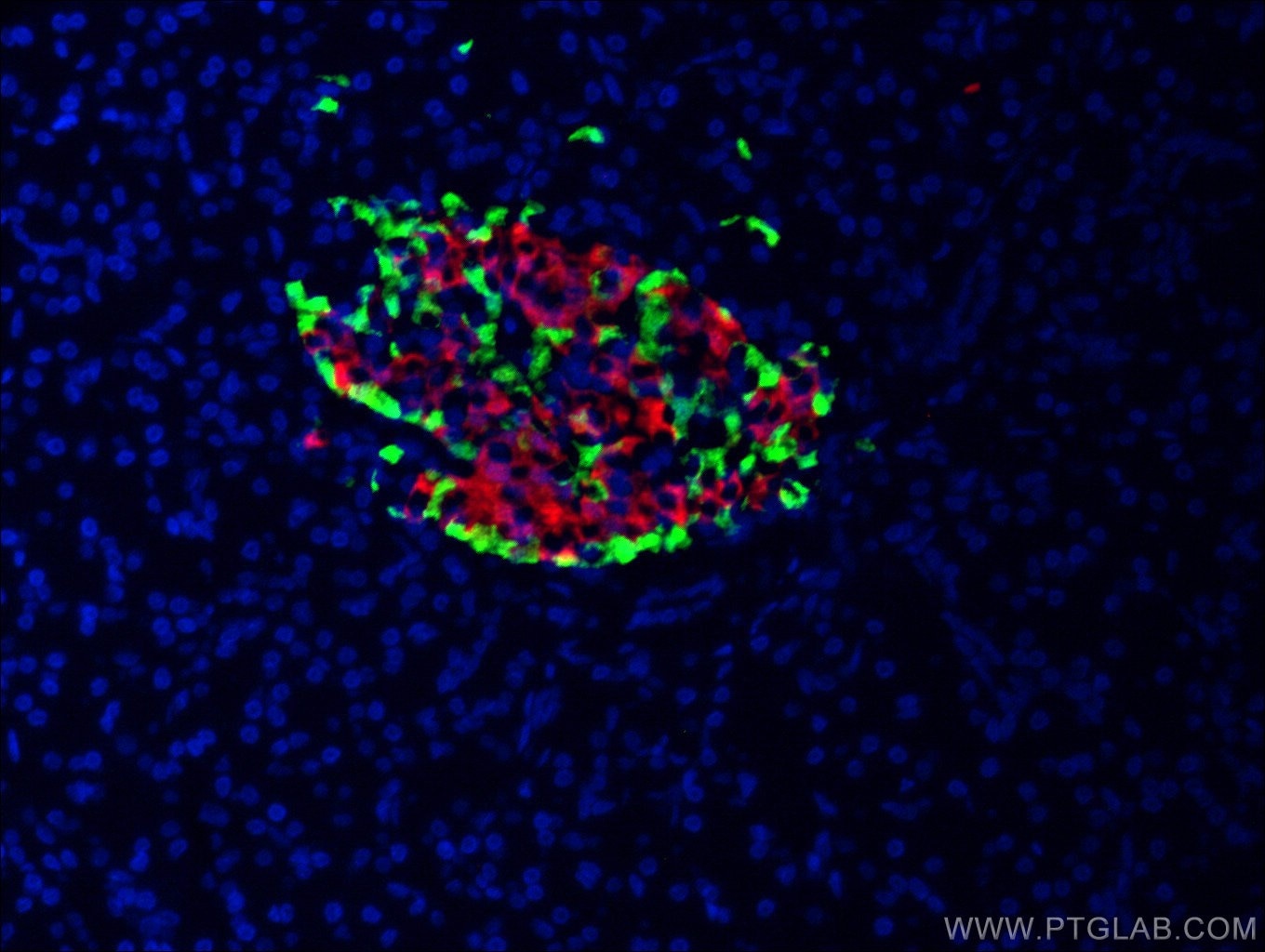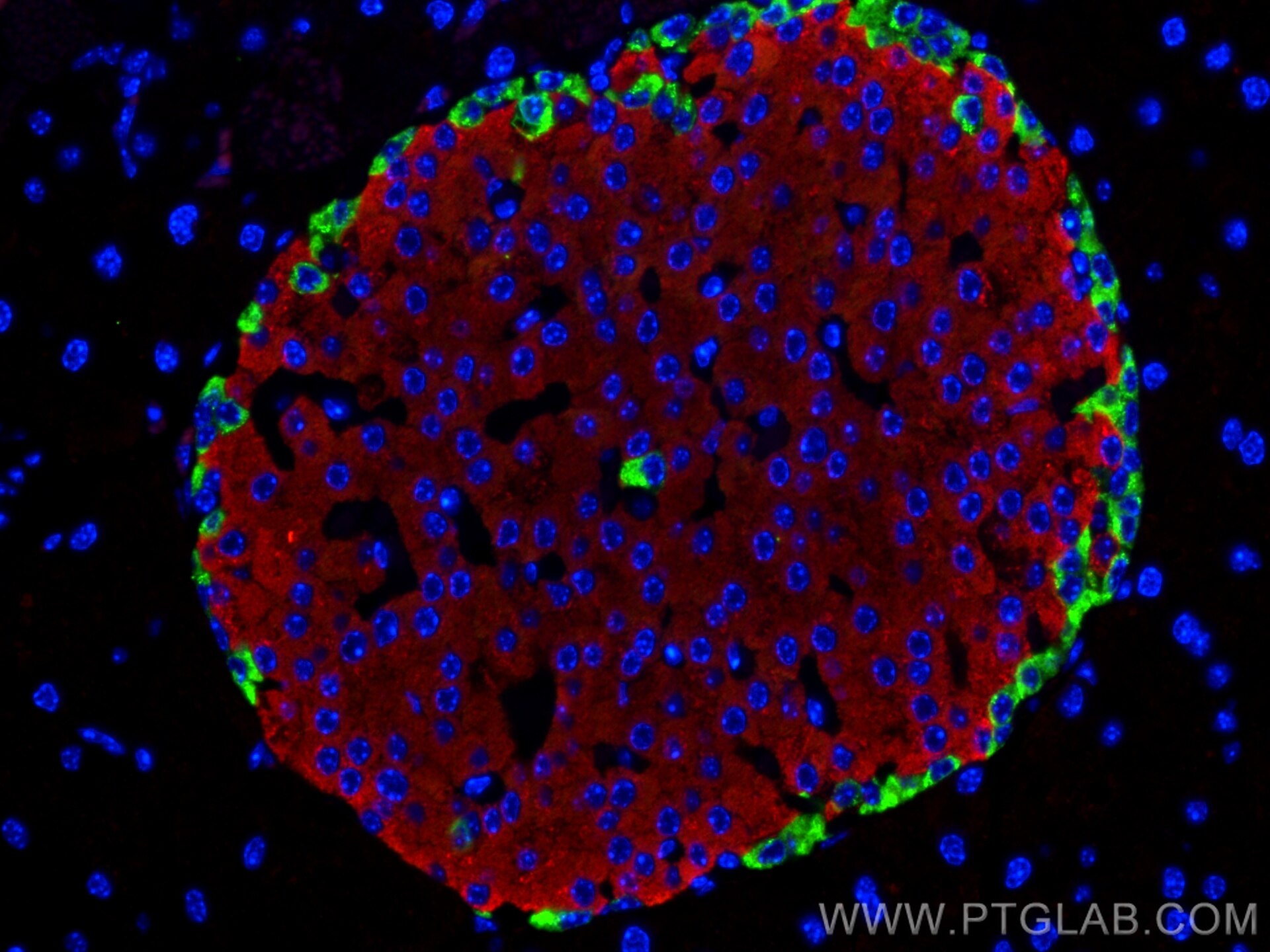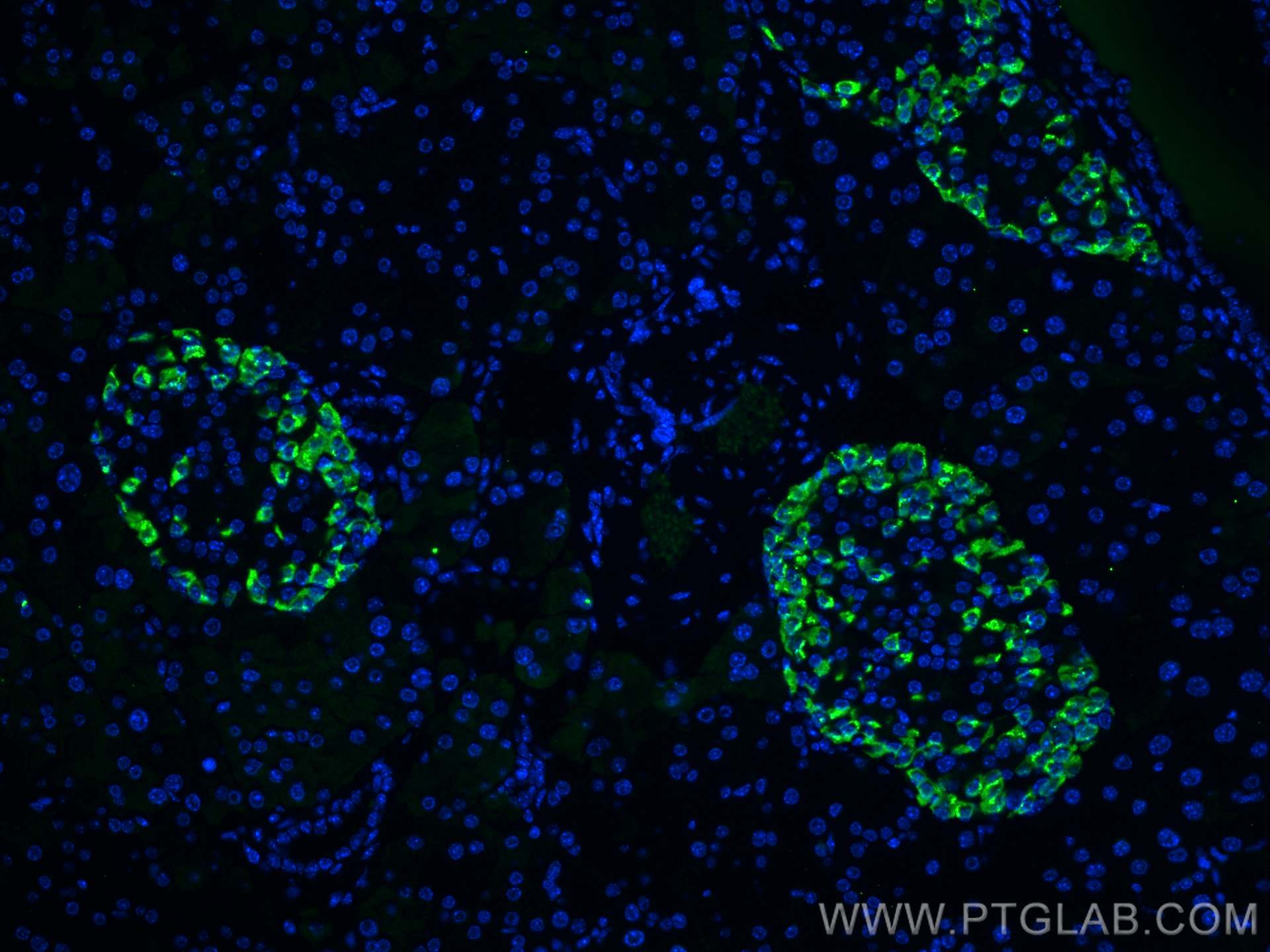Tested Applications
| Positive IHC detected in | human pancreas tissue, mouse pancreas tissue Note: suggested antigen retrieval with TE buffer pH 9.0; (*) Alternatively, antigen retrieval may be performed with citrate buffer pH 6.0 |
| Positive IF-P detected in | mouse pancreas tissue, human pancreas tissue |
Recommended dilution
| Application | Dilution |
|---|---|
| Immunohistochemistry (IHC) | IHC : 1:2000-1:15000 |
| Immunofluorescence (IF)-P | IF-P : 1:200-1:800 |
| It is recommended that this reagent should be titrated in each testing system to obtain optimal results. | |
| Sample-dependent, Check data in validation data gallery. | |
Published Applications
| IHC | See 1 publications below |
| IF | See 8 publications below |
Product Information
67286-1-Ig targets Glucagon in IHC, IF-P, ELISA applications and shows reactivity with human, mouse samples.
| Tested Reactivity | human, mouse |
| Cited Reactivity | human, mouse |
| Host / Isotype | Mouse / IgG1 |
| Class | Monoclonal |
| Type | Antibody |
| Immunogen |
CatNo: Ag10629 Product name: Recombinant human Glucagon protein Source: e coli.-derived, PET28a Tag: 6*His Domain: 1-180 aa of BC005278 Sequence: MKSIYFVAGLFVMLVQGSWQRSLQDTEEKSRSFSASQADPLSDPDQMNEDKRHSQGTFTSDYSKYLDSRRAQDFVQWLMNTKRNRNNIAKRHDEFERHAEGTFTSDVSSYLEGQAAKEFIAWLVKGRGRRDFPEEVAIVEELGRRHADGSFSDEMNTILDNLAARDFINWLIQTKITDRK Predict reactive species |
| Full Name | glucagon |
| Calculated Molecular Weight | 180 aa, 21 kDa |
| GenBank Accession Number | BC005278 |
| Gene Symbol | Glucagon |
| Gene ID (NCBI) | 2641 |
| RRID | AB_2882552 |
| Conjugate | Unconjugated |
| Form | Liquid |
| Purification Method | Protein G purification |
| UNIPROT ID | P01275 |
| Storage Buffer | PBS with 0.02% sodium azide and 50% glycerol, pH 7.3. |
| Storage Conditions | Store at -20°C. Stable for one year after shipment. Aliquoting is unnecessary for -20oC storage. 20ul sizes contain 0.1% BSA. |
Background Information
Glucagon is a 29-amino acid peptide hormone secreted from the pancreatic alpha cells with a powerful stimulatory effect on hepatic glucose production acting to increase plasma glucose levels. Glucagon is best known as the counter-regulatory hormone to INS, and normal glucose homeostasis depends largely on the balanced secretion of INS and glucagon from the pancreatic beta and alpha cells, respectively.The regulation of glucose metabolism by glucagon is mediated by its direct action on the peripheral tissues such as the liver and also by the brain. Glucagon is also released postprandially in a transient manner, which was shown to be involved in inhibition of food intake via reduction of meal size.
Protocols
| Product Specific Protocols | |
|---|---|
| IF protocol for Glucagon antibody 67286-1-Ig | Download protocol |
| IHC protocol for Glucagon antibody 67286-1-Ig | Download protocol |
| Standard Protocols | |
|---|---|
| Click here to view our Standard Protocols |
Publications
| Species | Application | Title |
|---|---|---|
Food Chem X Dendrobium officinale leaf polysaccharides ameliorated hyperglycemia and promoted gut bacterial associated SCFAs to alleviate type 2 diabetes in adult mice. | ||
Life Sci Alliance ciBAR1 loss in mice causes laterality defects, pancreatic degeneration, and altered glucose tolerance | ||
Mol Cell Endocrinol Mof acetyltransferase inhibition ameliorates glucose intolerance and islet dysfunction of type 2 diabetes via targeting pancreatic α-cells. | ||
Life Sci Semaglutide alleviates the pancreatic β cell function via the METTL14 signaling and modulating gut microbiota in type 2 diabetes mellitus mice | ||
Acta Pharm Sin B A critical role for Phocaeicola vulgatus in negatively impacting metformin response in diabetes | ||
NPJ Biofilms Microbiomes Bacteroides ovatus accelerates metformin-induced vitamin B12 deficiency in type 2 diabetes patients by accumulating cobalamin |


